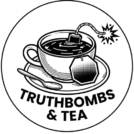Are you getting triggered by other people on the regular? Well you’re not alone and we’ve all been there.
Someone makes a comment, sends a text with the wrong tone, or behaves in a way that instantly floods us with anger, anxiety, or defensiveness. Our heart races, our thoughts spiral, and before we know it, we’ve reacted in a way we later regret. These emotional triggers can hijack our best intentions and damage our relationships, careers, and peace of mind.
The good news? You can learn to stop being controlled by these triggers. The secret lies in developing your emotional intelligence, specifically through the foundational skills of self-awareness and self-management. These aren’t just abstract concepts; they’re practical, learnable abilities that can transform how you navigate difficult interactions and reclaim control over your emotional responses.
Why Emotional Intelligence Matters More Than Ever
Emotional intelligence is the ability to recognize, understand, and manage our own emotions while also recognizing and influencing the emotions of others. In our hyper-connected world where we’re constantly bombarded with notifications, opinions, and interactions, emotional intelligence has become essential for maintaining our mental health and relationships.
Research consistently shows that emotional intelligence predicts success in life more reliably than IQ alone. People with high emotional intelligence enjoy better relationships, experience less stress, perform better at work, and report greater overall life satisfaction. When it comes to managing triggers specifically, emotional intelligence provides the foundation for breaking free from automatic, reactive patterns that don’t serve us.
The journey begins with two critical skills: self-awareness and self-management. Think of self-awareness as the radar system that helps you detect what’s happening inside you, and self-management as the steering mechanism that helps you choose your response rather than being controlled by impulse.
Understanding why you’re triggered: The Foundation of Self-Awareness
Self-awareness means having a clear understanding of your emotions, strengths, limitations, values, and motivations. When someone triggers you, self-awareness is what allows you to recognize what’s actually happening beneath your automatic reaction.
Most people operate on autopilot, reacting to triggers without understanding why. Someone criticizes their work, and they immediately become defensive. A family member makes a particular comment, and they shut down completely. These reactions feel instantaneous and unavoidable, but they’re actually the end result of complex internal processes that self-awareness can help you understand and interrupt.
The Anatomy of a Trigger
A trigger is essentially a stimulus that activates an emotional wound or unmet need. When triggered, your nervous system perceives a threat—not necessarily a physical threat, but a threat to your sense of self, security, or belonging. Your brain’s amygdala fires up, stress hormones flood your system, and you enter fight, flight, or freeze mode.
The key insight is that triggers always point to something deeper. If your colleague’s tone of voice sends you into a rage, the trigger isn’t really about their tone; it might be about feeling disrespected, unvalued, or reminded of a parent who spoke to you dismissively. Understanding this connection is the essence of self-awareness.
Developing Self-Awareness: Practical Steps
- Create a Trigger Journal
Start documenting your triggers as they happen. When you notice yourself having a strong emotional reaction, write down:
-What happened (the external event)
-What you felt (name the specific emotions)
-What you thought (your internal narrative)
-What you wanted to do (your impulse)
-What you actually did (your behaviour)
-Any physical sensations you noticed
Over time, patterns will emerge. You might notice that you’re particularly sensitive to feeling ignored, controlled, or judged. These patterns are goldmines of self-knowledge that illuminate your core vulnerabilities and unmet needs. - Practice the Pause
Between stimulus and response lies a space, and in that space lies your power. Train yourself to pause when you feel triggered. Even a three-second pause before responding can dramatically change outcomes.
Try this: When you notice yourself getting triggered, take three slow breaths before doing or saying anything. During those breaths, simply observe what you’re feeling without judgment. Notice where you feel it in your body. Name the emotion silently to yourself: “This is anger,” “This is shame,” “This is fear.”
This simple practice of pausing and naming creates psychological distance from the emotion, activating the prefrontal cortex and calming the amygdala. You’re essentially interrupting the automatic trigger-to-reaction pipeline. - Explore Your Backstory
Many of our strongest triggers have roots in childhood experiences or past traumas. A boss who micromanages might trigger feelings from a controlling parent. A friend’s cancellation might activate old abandonment wounds.
Spend time reflecting on or journaling about:
-What your current triggers remind you of from your past
-What needs went unmet in your childhood
-What you learned about emotions in your family of origin
-What beliefs you formed about yourself, others, and the world
This isn’t about blame or dwelling in the past; it’s about understanding the origin of your sensitivities so you can respond to the present moment rather than the ghosts of the past. - Cultivate Body Awareness
Your body registers emotional reactions before your conscious mind catches up. Learning to read your body’s signals gives you early warning that you’re being triggered, allowing you to intervene before you react.
Practice regular body scans: Close your eyes and mentally sweep through your body from head to toe, noticing any tension, tightness, or discomfort. Learn to recognize your personal warning signs. Maybe your jaw clenches when you’re angry, your chest tightens when you’re anxious, or your stomach drops when you feel rejected.
The more fluent you become in your body’s language, the earlier you can catch yourself being triggered. - Seek Feedback
Our blind spots are, by definition, things we can’t see. Ask trusted friends, family members, or colleagues for honest feedback about your emotional reactions. Questions like “Have you noticed any situations where I tend to overreact?” or “What emotions do I seem uncomfortable with?” can provide valuable external perspective on your internal patterns.
Self-Management: Choosing Your Response
Once you’ve developed awareness of your triggers, self-management becomes possible. Self-management is the ability to regulate your emotions, thoughts, and behaviours in ways that align with your values and long-term goals rather than being controlled by momentary impulses.
1.Develop Your Emotional Regulation Toolkit
Different strategies work for different people and different situations. Build a personalized toolkit of techniques you can deploy when triggered:
Physiological interventions: Cold water on your face, progressive muscle relaxation, breathing exercises (try box breathing: inhale for 4, hold for 4, exhale for 4, hold for 4), or intense physical exercise can all help regulate your nervous system.
Cognitive strategies: Challenge catastrophic thoughts with questions like “What evidence do I have?” or “Will this matter in five years?” Reframe the situation from the other person’s perspective. Use positive self-talk.
Behavioural tactics: Remove yourself from the situation temporarily, engage in a calming activity, or practice opposite action (if you want to lash out, speak calmly instead).
The key is having these tools ready before you need them. You can’t learn to swim when you’re drowning.
2. Master the Art of the Response vs. Reaction
A reaction is automatic, impulsive, and often regrettable. A response is intentional, considered, and aligned with your values. The goal isn’t to suppress your emotions but to choose how you express them.
When triggered, ask yourself:
-What outcome do I actually want here?
-What response would my best self choose?
-What will I be proud of tomorrow?
-How can I express my feelings constructively?
This shifts you from victim to agent, from being controlled by the trigger to consciously choosing your path forward.
3.Set Boundaries Without Apology
Sometimes self-management means recognizing that certain people or situations consistently trigger you in ways that aren’t productive to engage with. It’s okay to limit exposure, exit conversations that become toxic, or establish clear boundaries about what behaviour you’ll accept.
Boundaries aren’t about controlling others; they’re about defining what you need to feel safe and respected. Practice saying things like “I need to take a break from this conversation” or “That topic isn’t something I’m willing to discuss” without over-explaining or apologizing. Also practice, declining invitations without having to lie or justify – a simple “Thank you so much but I won’t be able to make it’ is sufficient.
4.Practice Self-Compassion
Managing triggers is hard work, and you won’t always do it perfectly. Self-management includes treating yourself with kindness when you fall short rather than harsh self-criticism that just creates more emotional dysregulation.
When you react poorly despite your best intentions, practice the three components of self-compassion: acknowledge your suffering without exaggeration or minimization, recognize that imperfection is part of being human, and speak to yourself as you would to a good friend.
5.Create New Neural Pathways
Every time you successfully manage a trigger differently, you’re literally rewiring your brain. The old pattern had a well-worn neural pathway; you’re now carving a new one. Initially, the new response feels awkward and requires tremendous effort. But with repetition, it becomes more automatic.
Celebrate small wins. If you paused for three seconds instead of immediately lashing out, that’s progress. If you recognized you were triggered even after you reacted, that’s growth. Each iteration strengthens the new pathway.
Building Emotional Resilience – The Long Game
Developing self-awareness and self-management isn’t a quick fix; it’s a lifelong practice. But the investment pays exponential dividends. As you become less reactive, your relationships deepen. As you understand yourself better, you make choices more aligned with who you really are. As you manage your emotions more effectively, you experience greater peace and confidence.
The goal isn’t to never feel triggered. Emotional sensitivity can be a gift when properly understood and managed. The goal is to stop being controlled by your triggers and start responding to life from a place of groundedness and choice.
Other people will always do things that could trigger you. That’s outside your control. But your response is entirely within your control once you develop the emotional intelligence to see clearly, pause intentfully, and choose consciously.
Start small. Pick one practice from this article and commit to it for a week or two. Notice what changes. Be patient with yourself. And remember: the fact that you’re reading this and working on yourself already demonstrates emotional intelligence in action. You’re not trying to become perfect; you’re trying to become more aware, more intentional, and more free.



